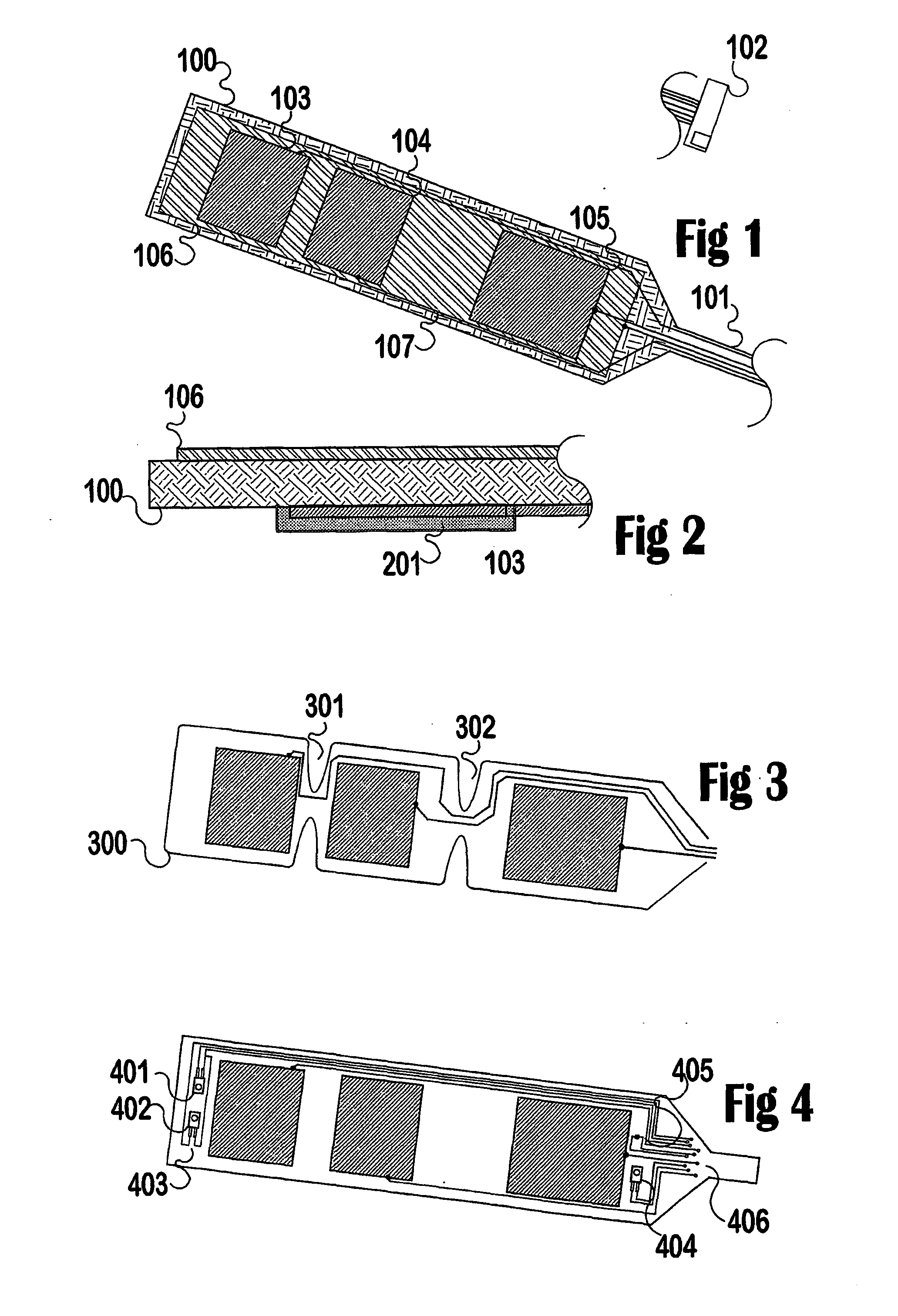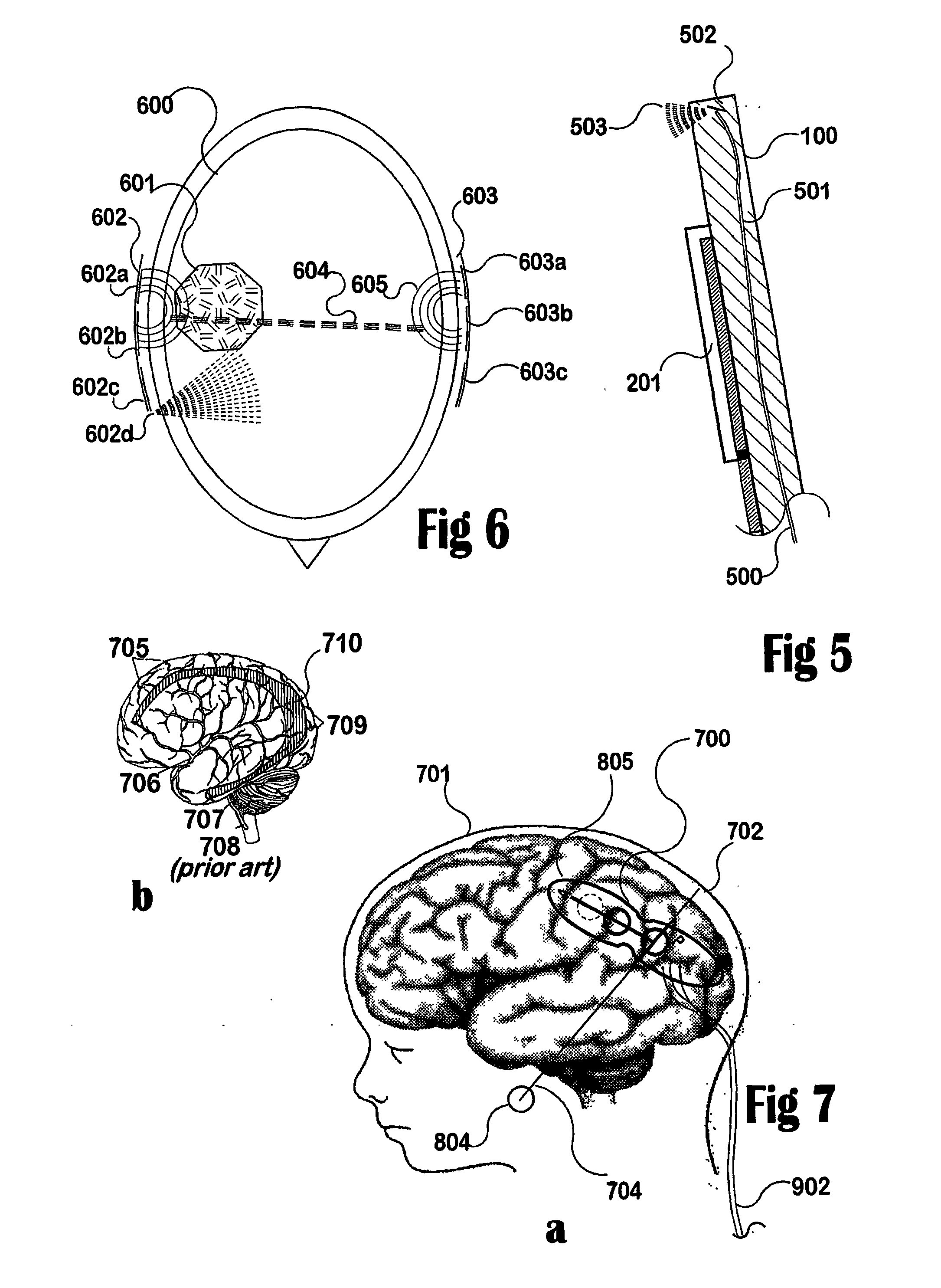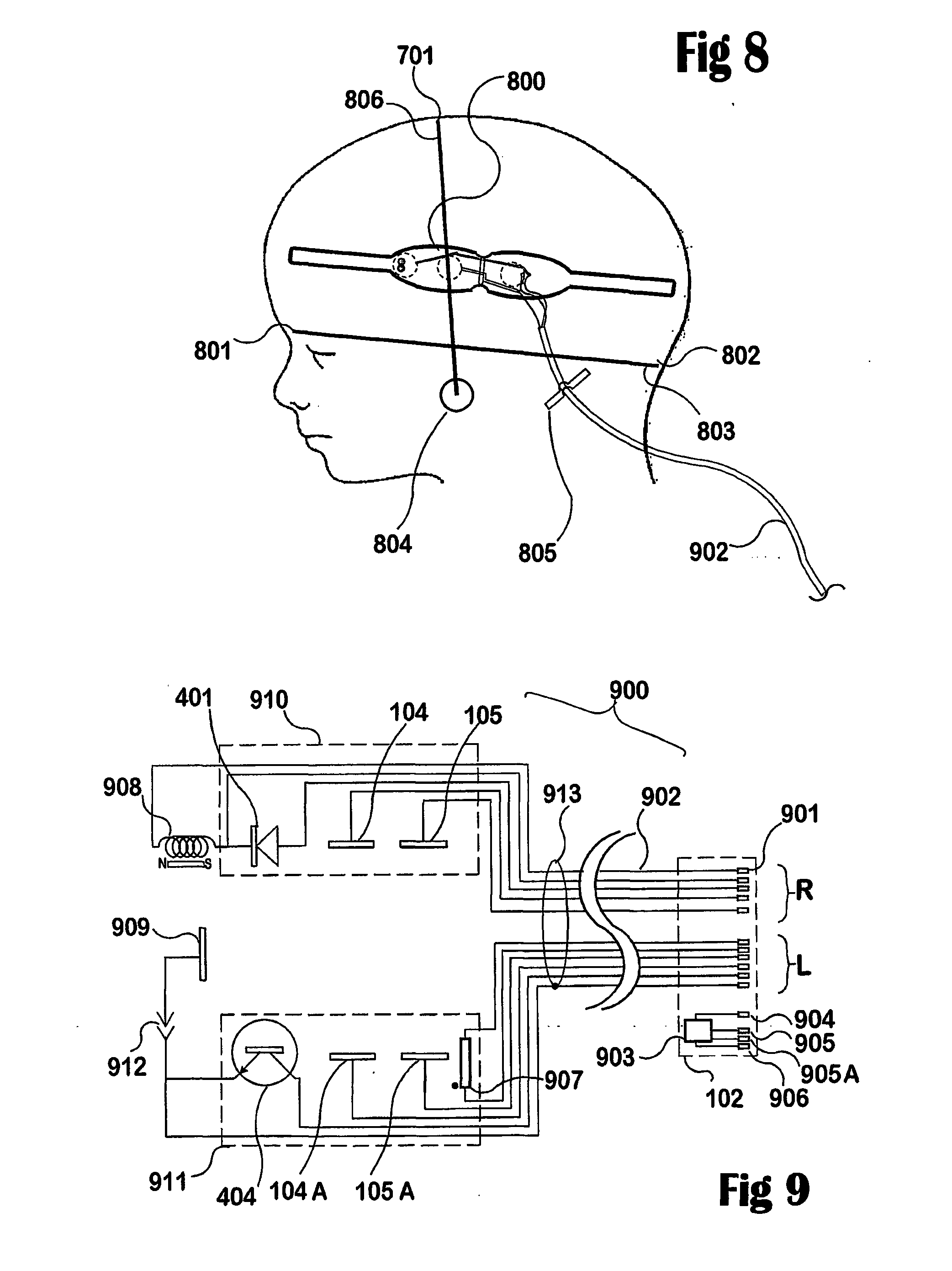Sensor assembly for monitoring an infant brain
a sensor and brain technology, applied in the field of sensors, can solve the problems of small low-frequency ac signal, and inability to detect the position of the sensor,
- Summary
- Abstract
- Description
- Claims
- Application Information
AI Technical Summary
Benefits of technology
Problems solved by technology
Method used
Image
Examples
example 1
[0054] The cranium of a pre-term infant or neonate has a circumference of very approximately 220-320 mm. The electrode array within the sensor assembly of this invention is adapted in size to match the disposition of intracranial structures to be monitored with the electrode spacings supplied within the electrode array. As indicated in the Background, most neural defects in a pre-term infant or neonate lie in a single (though often bilateral) fairly well defined site (see FIG. 7). The skin of a pre-term infant or neonate has a very thin protective layer of partially keratinised squamous epithelium and hence the rather aggressive means to reduce the barrier imposed by the skin of an adult is not required. In fact, the delicate nature of the skin may be a liability. Practical problems are generally as a result of other medical interventions such as application of oils or petroleum jelly, or use of head coverings.
[0055] We prefer to provide each skin electrode, generally of the chlorid...
example 2
[0062] One electrode set is likely to have several days of use. Because proper monitoring of brain injury may prevent the baby from suffering permanent brain damage, further active circuitry may be economically justified within a sensor assembly. For BDM applications, a temperature sensing transducer 405 is an example of an additional feature. There may be clinical justification for applying cooling to the head and a cooling cap (for control of injury-related pathophysiology) is another product of the inventor's team. Similarly, a movement sensing transducer (usually a moving coil (908) or a piezoelectric device) may be embedded in the support surface or in a forehead ground electrode in order to provide extra information about the state of the patient. The EEG signals may be discarded during movement so that movement artefacts do not affect interpretation.
[0063] Optionally, blood presence, blood amount, or blood oxygenation sensors, based on optical methods are included with the el...
example 3
[0070] In a neonatal intensive care unit where the BDM is most likely to be used, one BDM on a support is placed beside or attached to an incubator or tent containing the patient for the duration of the study. An optional head stage or preamplifier may be extended from the BDM towards the infant so that interference is reduced and so that the sensor assembly wire is kept reasonably short. The head stage may be the only custom electronics module; the remainder of the BDM may comprise software running in an ordinary personal computer. A disposable kit, including a left and a right set of sensor assemblies having pre-gelled disposable electrodes together with skin preparation materials, labels, and the like provides all the materials needed to connect a neonate's head to a BDM. Instructions are preferably presented on the screen of the BDM but should be repeated on a paper insert or the like within each kit in case the BDM is not available at the point where the electrodes are put in p...
PUM
 Login to View More
Login to View More Abstract
Description
Claims
Application Information
 Login to View More
Login to View More - R&D
- Intellectual Property
- Life Sciences
- Materials
- Tech Scout
- Unparalleled Data Quality
- Higher Quality Content
- 60% Fewer Hallucinations
Browse by: Latest US Patents, China's latest patents, Technical Efficacy Thesaurus, Application Domain, Technology Topic, Popular Technical Reports.
© 2025 PatSnap. All rights reserved.Legal|Privacy policy|Modern Slavery Act Transparency Statement|Sitemap|About US| Contact US: help@patsnap.com



